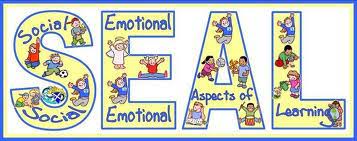Introduction
Social and Emotional Aspects of Learning (SEAL) is a comprehensive, evidence-based approach that aims to support the development of social, emotional, and relationship skills in young people. This framework has gained growing recognition for its effectiveness in fostering positive behaviors, preventing misconduct, and promoting mental health among students. To expand on these benefits at a secondary level, it is crucial to understand the unique challenges faced by high schools and implement strategies for integrating SEAL into age-appropriate formats.
Challenges in Making Secondary SEAL Work
High school students often face complex social and emotional challenges which differ significantly from the challenges faced by younger children. They may face academic pressures, increasing personal responsibilities, peer group dynamics, as well as the stresses brought on by growing up and discovering their sense of self. Given these particular circumstances, implementing a successful SEAL program requires tailoring it to the needs of adolescents while taking a holistic approach involving both educators and families.
Strategies for Effective Implementation of Secondary SEAL
1. Early Identification and Support: Early identification of students with social, emotional or behavioral challenges can help provide individualized support for those who need it most. Educators should be trained to recognize signs of distress or disengagement among students to take swift action when intervention is required.
2. Continuous Training: Teachers play an essential role in promoting positive behavior among students. They are not only responsible for delivering academic content but also nurturing a productive learning environment that supports emotional well-being. Therefore, it is crucial to invest in continuous professional development opportunities for educators to improve their understanding of social-emotional skills and develop relevant teaching techniques.
3. Age-Appropriate Curriculum: The secondary SEAL program should maintain a strong focus on refining social-emotional competencies while addressing age-specific concerns such as peer pressure and substance abuse. This way, students will be more inclined to participate actively in discussions and activities if they perceive the curriculum to be relevant to their lives.
4. Involvement of Parents and Guardians: Parents and guardians play a crucial role in a child’s social and emotional development. Engaging them in school-based SEL initiatives can provide valuable insights into a student’s needs, allowing educators to tailor their support effectively. In addition, parent involvement in the school community fosters stronger collaboration between families and staff members.
5. Peer-to-Peer Support: Developing a peer support program can facilitate deeper connections among high school students. By nurturing empathetic relationships between peers, they gain valuable communication skills and develop the ability to offer emotional support for one another.
6. Infuse SEAL Principles Across All Aspects of School Life: A successful secondary SEAL program needs to be integrated across all aspects of school life, from academic instruction to extracurricular activities. This systematic approach will create an environment that promotes positive mental health, fosters resilience, improves academic outcomes, reduces anti-social behaviors, and enhances personal well-being.
Conclusion
Making secondary SEAL work is both challenging and rewarding. Achieving success relies on understanding the nuances of adolescent experiences and shaping SEL initiatives accordingly while adopting tactics that seamlessly integrate social-emotional learning throughout the school culture. By employing strategies like early identification, continuous training, age-appropriate curriculum development, engaging parents, encouraging peer support systems, and embracing holistic principles, high schools can capitalize on SEAL programs’ potential benefits for students’ overall development.





